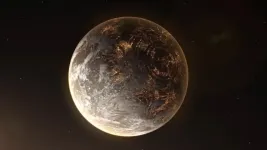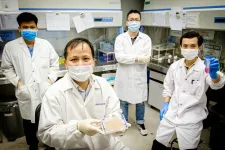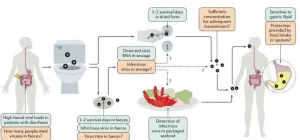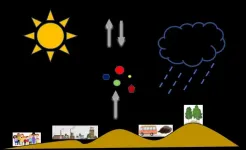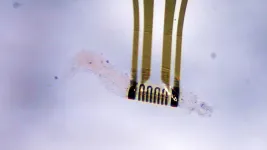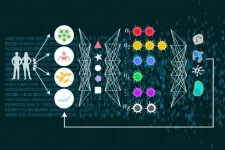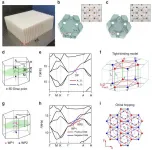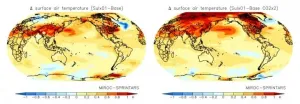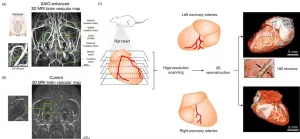(Press-News.org) A researcher at the Instituto de Astrofísica de Canarias (IAC) is the lead author of a study with proposals for "technosignatures" -evidence for the use of technology or industrial activity in other parts of the Universe- for future NASA missions. The article, published in the specialized journal Acta Astronautica, contains the initial conclusions of a meeting of experts in the search for intelligent extraterrestrial life, sponsored by the space agency to gather advice about this topic.
In the article, several ideas are presented to search for technosignatures that would indicate the existence of extraterrestrial civilizations, from the most humdrum, such as the presence of industrial pollution in the atmosphere or large swarms of satellites, to hypothetical gigantic space engineering work, such as heat shields to fend off climate change, or Dyson spheres for optimum use of the light from the local star. Some of the proposed searches look very far in space, across our galaxy and even beyond, while others aim at scanning our own solar system in search for probes that might have been sent here in a distant past. In addition, a study is included of a new way of classifying the technosignatures as a function of their "cosmic footprint", a measure of how conspicuous they are at large distances.
"We have no idea whether intelligence is something very common in the Universe or, on the contrary, whether it is extremely rare", explains Hector Socas-Navarro, an IAC researcher, the Director of the Museum of Science and the Cosmos, of Museums of Tenerife, and the first author of the article. "For that reason we cannot know whether these searches have any chance of success. There is no choice but to search and see what we find, because the implications would be tremendous".
"The idea of searching for technosignatures draws upon the technology we have on Earth today and possible extensions of our technology into the future", notes Jacob Haqq-Misra, a coauthor of the article and chairman of the TechnoClimes 2020 organizing committee. "This does not necessarily mean that any extraterrestrial technology must be like our own, but imagining plausible extensions of our own future is one place to begin thinking of astronomical searches we could actually do to look for possible technosignatures".
The search for technosignatures
In 1993, NASA abruptly terminated its initial SETI programme for the search for intelligent extraterrestrial life, when it had hardly started. It comprised two complementary ambitious projects, one using the giant radiotelescope at Arecibo, Puerto Rico, and the other with the antennas of the Deep Space Network in California. Now, nearly 30 years later, things have changed and the Agency wants to re-start its search effort.
In the past decade great advances in astronomical instrumentation have been made, leading to a revolution in the science of discovery and study of exoplanets. The new telescopes, and projects on future space missions will for the first time allow the search for so-called biomarkers, evidence for life on other planets. Many experts consider it plausible that in the coming years we will discover extraterrestrial life, even though it is most likely to be life in very simple form.
Given present and future technological advance there will be new opportunities to search for technosignatures. That is why NASA has decided to get involved again in the search for extraterrestrial intelligence, taking advantage of the possibilities of the current and proposed future space observatories.
These subjects, among others, were on the agenda of the meeting TechnoClimes 2020 under the auspices of NASA at the Blue Marble Space Institute of Science (Seattle, USA). With scientists from all over the world, its aim was to propose new developments making way for future advances.
Finally, due to the COVID-19 pandemic, the meeting was held virtually via videoconference, in which 53 researchers from various disciplines coming from 13 countries discussed a range of aspects of the search for other intelligent species.
INFORMATION:
Article: Héctor Socas-Navarro, Jacob Haqq-Misra, Jason T. Wright et al. "Concepts for future missions to search for technosignatures", Acta Astronautica, 2021: https://www.sciencedirect.com/science/article/abs/pii/S009457652100103X.
- DOI: https://doi.org/10.1016/j.actaastro.2021.02.029
- Arxiv: https://arxiv.org/abs/2103.01536
Links of interest:
- TechnoClimes meeting 2020: https://technoclimes.org/
They say a picture is worth a thousand words. However, many women artists - and the stories their works tell - comprise less than 4 per cent of total art sold at auction and fail to attract high selling prices compared to male artists.
A world-first international study by researchers at Monash University, Maastricht University (The Netherlands) and Artnet Worldwide, based in New York City, found that a staggering 96.1 per cent (2,572,346) of all artworks sold at auctions worldwide between 2000 and 2017 are attributed to male artists.
However, work by female artists are on average 4.4 per cent more ...
When the body detects a pathogen, such as bacteria or viruses, it mounts an immune system response to fight this invader. In some people, the immune system overreacts, resulting in an overactive immune response that causes the body to injure itself, which may prove fatal in some cases.
Now, scientists from Nanyang Technological University, Singapore (NTU Singapore) have created a compound that could help to reduce this overactivation without impairing the body's entire immune response.
An overactive immune system leads to many autoimmune disorders - when the immune system mistakenly attacks healthy ...
Recently, Prof. ZHU Shu from University of Science and Technology of China (USTC) of CAS and Prof. Richard A. Flavell from Yale University were invited to publish a review article in Nature Reviews Gastroenterology and Hepatology. They systematically summarized the gastrointestinal manifestations in patients with COVID-19 and explored the possible mechanisms of intestinal symptoms caused by COVID-19 infection.
Although the clinical manifestations of COVID-19 are primarily fever, cough, and pulmonary imaging, gastrointestinal symptoms have also ...
At the end of December 2019, Coronavirus Disease 2019 (COVID-19) quickly spread throughout Hubei Province and other parts of China. During the 2020 Spring Festival, public activities were cancelled, people tried their best to stay at home, and human and industrial activities were reduced to a basic or minimum level. However, during this period, severe fog-haze events occurred over the North China Plain. What was the leading factor that caused these severe smog incidents? And what were the individual impacts of meteorological conditions and emission reductions?
To evaluate the impacts of meteorological conditions and emission reduction measures on the near-surface PM2.5 (fine particulate matter) during the COVID-19 lockdown, ...
Flexible and adaptive microelectronics is considered an innovation driver for new and more effective biomedical applications. These include, for example, the treatment of damaged nerve bundles, chronic pain, or the control of artificial limbs. For this to work, close contact between electronics and neural tissue is essential for effective electrical and mechanical coupling. In addition, potential applications arise from the production of tiny and flexible surgical tools.
An international team led by Prof. Dr. Oliver G. Schmidt, head of the Institute for Integrative Nanosciences at the Leibniz Institute ...
Tokyo, Japan - Scientists from the Institute of Industrial Science at The University of Tokyo demonstrated how the adaptive immune system uses a method similar to reinforcement learning to control the immune reaction to repeat infections. This work may lead to significant improvements in vaccine development and interventions to boost the immune system.
In the human body, the adaptive immune system fights germs by remembering previous infections so it can respond quickly if the same pathogens return. This complex process depends on the cooperation of many ...
Recently, the three-dimensional (3D) Dirac points and 3D Dirac semimetals have attracted tremendous attention in the field of topological physics. The 3D Dirac point is a fourfold band crossing in 3D momentum space, which can be view as the degeneracy of two opposite Weyl points. However, the 3D Dirac points can be described by the Z2 topological invariant other than the Chern number. The topological property of 3D Dirac point is not totally the same as Weyl point. Besides, the transition from Dirac points to Weyl points has not been experimentally studied in both photonic and acoustic systems so far. Therefore, the theoretical or experimental breakthrough of 3D Dirac points and the study on their transition is of great ...
As countries around the world race to mitigate global warming by limiting carbon dioxide emissions, an unlikely source could be making climate goals harder to achieve without even deeper cuts in greenhouse gas production: reductions in air pollution.
New modeling experiments from Kyushu University in Japan of the long-term effects of reductions in pollutants known as sulfate aerosols predicts further increases in surface air temperature at current and increased carbon dioxide levels because of the loss of an overall cooling effect caused by the light-scattering particles.
"Air pollution causes an estimated seven million premature deaths per year worldwide, so action is essential, especially in emerging and developing countries, which tend to be most affected," ...
Heart attack and stroke are the first and second leading causes of death in developed countries, respectively. As the disease often results in sudden death with few special prognostic symptoms, early diagnosis is very important. For this purpose, imaging techniques such as magnetic resonance imaging (MRI) are widely used to identify the narrowing or blockage of blood vessels.
In MRI, contrast agents improve the visibility of the structures such as smaller blood vessels within the body. Just as satellites or global positioning systems (GPS) give traffic congestion information, the MRI contrast agents can give accurate information of vascular conditions such as vascular ...
A year ago, infectious disease doctor Christine Johnston was leading a study on the use of hydroxychloroquine for the treatment of people with COVID-19.
The trial launched at the end of March, when the disease was putting the world on pause and killing thousands.
Hydroxychloroquine showed promise in studies done in test tubes rather than in animals or humans. If the drug worked, it would be cheap, safe, and available. As the trial got going in April, however, hydroxychloroquine was being touted as a treatment without any rigorous evidence.
"The world was at a desperate moment and people were jumping to conclusions," ...
